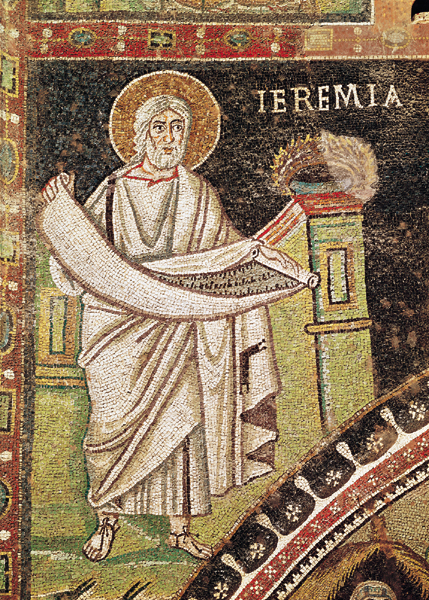Image Details

Scala/Art Resource, NY
The aged prophet unfurls his scroll, in this sixth-century mosaic from the Church of San Vitale, in Ravenna, Italy. The Book of Jeremiah recounts the life and oracles of the prophet, who was active in Judah in the late seventh and early sixth century B.C.E., in the last days of the kingdom of Judah. During the reign of Jehoiakim (c. 609–598), Jeremiah warned the Jerusalemites that God would destroy their Temple—the House of God—if they did not mend their ways: “Will you steal, murder, commit adultery, swear falsely, make offerings to Baal, and go after other gods that you have not known, and then come and stand before me in this house? Therefore I will do to the house that is called by my name, in which you trust, and to the place that I gave to you and to your ancestors, just what I did to Shiloh [a shrine destroyed in the days of Solomon]. And I will cast you out of my sight” (Jeremiah 7:9–10, 14–15).
When Babylon gained control over Jerusalem, the prophet begged the new Jewish king, Zedekiah, not to revolt but to submit to Nebuchadnezzar until God broke the yoke of Babylon. Ignoring the prophet’s plea, Zedekiah rebelled. Babylon renewed its siege of Jerusalem, breached the city walls and destroyed the Temple. Zedekiah —the last king of Judah—was brought before Nebuchadnezzar, blinded and sent into exile in Babylonia.
